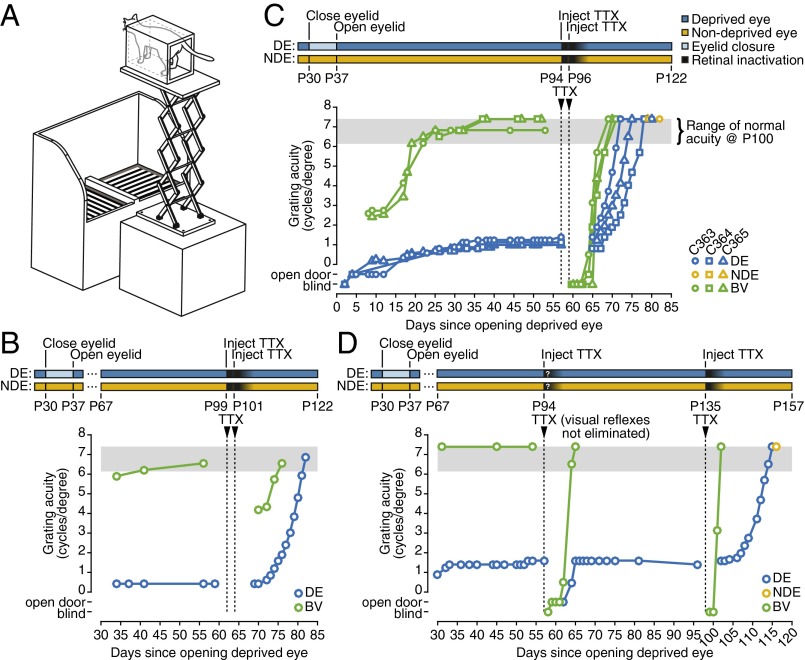Fig. 2.
Binocular retinal inactivation following MD promotes recovery of visual acuity in behaving kittens. (A) The jumping stand used to test grating acuity. (B) Visual spatial acuity of the deprived eye (DE: blue) and nondeprived eye (NDE), assessed using binocular vision (BV: green) of a kitten (C349) that received two injections of TTX at P99 and P101. The period of complete and waning retinal inactivation that ensued is depicted by completeness of black shading. As with subsequent panels, the rearing history is displayed in schematic form above the graph. Gray shading shows the range of grating acuities measured in normal kittens by use of the same testing procedure. The designations “blind“ and “open door” refer, respectively, to an inability or ability to locate a closed door on the jumping stand by visual cues alone. (C) The visual acuity of the DE and NDE tested in three littermates (C363, C364, and C365) before and after two binocular intravitreal injections of TTX made at P94 and P96. All animals received a 7-d period of MD at P30 (NDE acuity assessed monocularly: yellow; other conventions as in A). (D) Results from C362 that received an initial binocular TTX injection at P94 that apparently did not achieve full retinal activity block as the pupils were not dilated fully and visual placing behavior was still evident. Although the animal appeared blind on the jumping stand, the acuity of the NDE recovered to normal in 8 d but the acuity of the DE recovered only to its preinjection level. Remarkably, following a second binocular intravitreal injection at P135 the acuity of this eye recovered to normal levels.

